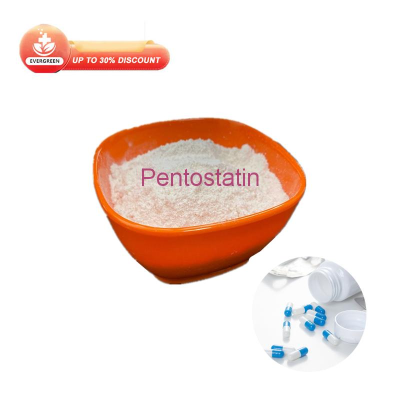-
Categories
-
Pharmaceutical Intermediates
-
Active Pharmaceutical Ingredients
-
Food Additives
- Industrial Coatings
- Agrochemicals
- Dyes and Pigments
- Surfactant
- Flavors and Fragrances
- Chemical Reagents
- Catalyst and Auxiliary
- Natural Products
- Inorganic Chemistry
-
Organic Chemistry
-
Biochemical Engineering
- Analytical Chemistry
- Cosmetic Ingredient
-
Pharmaceutical Intermediates
Promotion
ECHEMI Mall
Wholesale
Weekly Price
Exhibition
News
-
Trade Service
Intra-hepatic bile tube cell carcinoma (ICC) is the second largest primary liver malignancy, ranking after liver cell liver cancer.
the past few decades, the incidence and mortality rates of the ICC have increased year by year.
a cure-all excision may prolong the long-term life of the ICC.
Unfortunately, even with today's medical surgery, most patients are diagnosed with tumors that are no longer removable and in poor physical condition, so only a small percentage can meet the requirements for surgical excision.
, ICC has an early invasion proximity structure, a distant metastasis, and poor clinical prognosmology.
, it is very urgent to optimize treatment options.
years, oncology immunotherapy has brought some light in the treatment of various tumors.
immune tolerance by suppressing the host's anti-tumor immune response, which also offers hope for ICC treatment.
, only 20 to 50 per cent of patients respond to immunotherapy.
key to treatment is immunosuperatives (ICB).
, the immunosupergenes of tumors can be divided into inflammatory and non-inflammatory types according to the density of CD8-T cells.
clinically shown that ICC is most effective for inflammatory tumors.
it is of great significance to effectively identify ICC tumor subsypes before surgery to predict ICC treatment response! Although immunologic tissue chemical testing is the gold standard for detecting the density and distribution of immune cells, its application in clinical practice is limited due to the invasiveness and complications of the material.
is it effective and non-invasive to evaluate the ICC immunotype? A paper published recently on Eur Radiol called Intrarahepatic cholangiocarcinoma: MRI texture as prediction biomarkers of immunophenotyping and survival predicts immunosomygenesis (IP) and total survival (OS) in patients with endocarcinoma (ICC) by using preoperative magnetic resonance imaging (MRI) texture analysis.
the study included a total of 78 ICC patients, divided into inflammatory (n-26) or non-inflammatory (n-52) ICC based on the density of CD8-T cells.
texture analysis using arterial-enhanced T1-weighted MRI images.
application logic regression analysis to select meaningful features related to IP.
OS-related characteristics are determined by the Cox Scale Risk Model and Kaplan-Meier analysis.
the IP and OS prediction models were developed using the selected features.
picture. The results of the study, which was incorporated into the flowchart, showed that three small waves and one 3D feature had good IP recognition, with the best combination performance, with AUC at 0.919.
predicts the immune esope for the inflammatory type is better than for the non-inflammatory type ICC.
5-year survival rates of the two groups were 48.5% and 25.3%, respectively.
only wavelet-HLH_firstorder_Median characteristics are associated with OS and are used to build OS prediction models, with a C index of 0.70 (95% CI, 0.57, 0.82), which can well divide ICC patients into high-risk and low-risk groups.
1-year, 3-year and 5-year survival rates for the two groups were 62.5 per cent and 30.0 per cent, 24.2 per cent and 89.5 per cent, 62.2 per cent and 42.1 per cent, respectively.
. The selected texture features are analyzed by the ROC graph for immuno-esographic identification. Texture analysis features a strated map of the risk of ICC patients predicting total lifetime. Representative cases: Inflammatory and non-inflammatory ICC results show that MRI texture characteristics in ICC patients can be used as predictive IP and OS biomarkers.
is written in the back: through MRI images, the use of the human eye to analyze the immune subtype of bile tube cell carcinoma in the liver is not to think, but most of the progress of human civilization comes from creative tools or technology! Texture analysis is a hot technique studied in recent years.
people are creative, the amount of time they spend in simple, mechanical or precise and complex work - the cost-effectiveness of output is low, and the ability of different people to do the work is uneven.
texture analysis is the simple and mechanical, accurate and complex work through the computer's computing power to complete quickly and step by step.
this is also a mental industrialization revolution!







